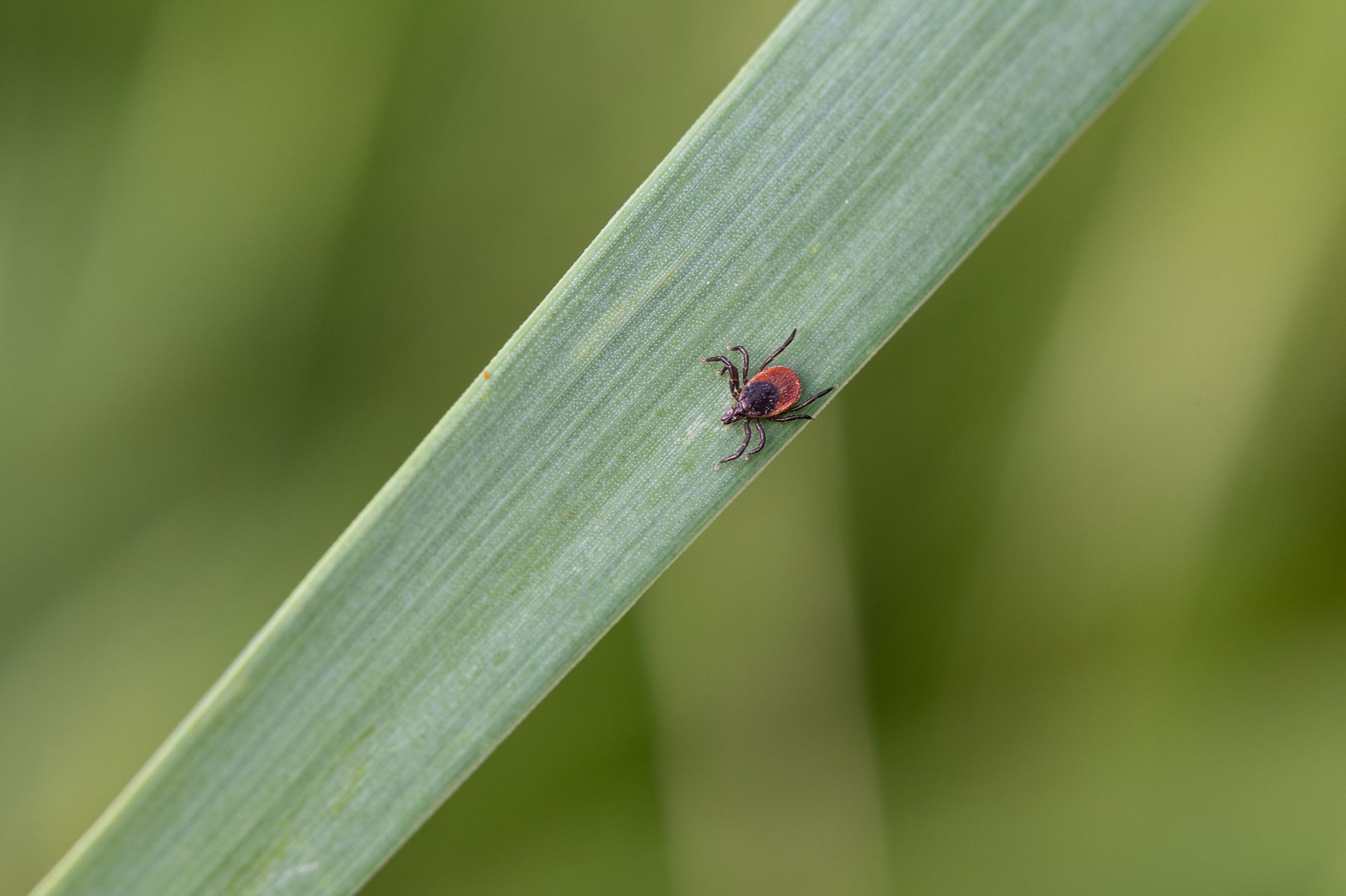Veganism: A Flawed Solution

Will Appleton
3 December 2019
Veganism: A Flawed Solution
My mother is a functional medicine physician who treats her patients by examining the
root causes of their disease and pain. Her holistic approach seeks to explore the internal and
external factors which could be causing harm to a human. In doing so, she has found that the
food which we consume is vital for both treating a wide variety of diseases and supporting lifelong
health. While it may be shocking, patients who come to her already on a vegan diet are
often the least healthy. This personal experience of hers is contrary to much of the media rhetoric
surrounding veganism. A strict vegan diet excludes consumption of all animal-based products,
and many claim that it is a solution to the declining health of Americans and the environment.
This conflict between my mother’s clinical experience and the media portrayal of veganism calls
into question the true impacts of a vegan diet. This paper examines the effects of veganism on
health and the environment to portray how it is an unsustainable long-term diet. Thus, a more
diverse plant-based diet including animal proteins, also known as a “pegan” diet, is healthier and
more environmentally sustainable.
Abstaining from meat has been a dietary choice of people since early times. However, the
first modern vegans were established in November of 1944 when Donald Watson met with five
other non-dairy vegetarians to further delve into vegetarian diets and lifestyles. The group
decided to coin the term “vegan” to replace what had been commonly referred to as “non-dairy
vegetarians” (“History”). These pioneer vegans defined their mission as “[seeking] an end to the
use of animals by man for food commodities, work, hunting, vivisection, and by all other uses
involving exploitation of animal life by man” (“History”). In the early 2000s, there was a rise in
media coverage of the environmentally damaging, unhealthy, and inhumane practices of the
United States meat industry. Expository works such as Fast Food Nation: The Dark Side of the
All-American Meal, a novel published in 2001, and Food, Inc., a documentary released in 2008,
displayed the horrors of the meat industry. Increased awareness of American food practices
combined with the media coverage of declining human and environmental health led to an
increase in the popularity of veganism as it promised a solution to health and environmental
problems associated with the meat industry. This rise is displayed by a six-hundred percent
increase in the number of American vegans from 2014 to 2017 (Forgrieve). Vegans have chosen
to modify their diets to follow the founders of modern veganism to reduce animal suffering,
improve their health, and support environmental change. Although this appears to be well
reasoned, it is essential to examine veganism’s impact on a national and individual level.
The absence of dietary animal protein can cause many vegans to struggle with nutritional
deficiencies leading to long term health consequences. A study of adult females in Northwest
England found that vegans have a significantly lower intake of the critical micronutrients of
vitamin D, vitamin B12, selenium, and iodine when compared to the general population (Fallon,
et al. E38). These nutritional deficiencies have also been found in Danish vegans who have
statistically significant deficiencies in vitamin A, riboflavin, vitamin B12, vitamin D, iodine, and
selenium. In contrast, those consuming an omnivorous diet do not have such deficiencies
(Kristensen, et al. 6). Vitamin A deficiency can cause night blindness, dry and scaly skin, and
decreased immune health in the respiratory tract, gut, and urinary tract. Furthermore, severe
deficiencies of Vitamin A can lead to cancer in these areas of the body. Riboflavin (B2) has been
found to negatively impact the reproduction of intestinal cells leading to malabsorption issues in
the gastrointestinal tract. Vitamin B12 deficiency can lead to pernicious anemia, a deadly
condition characterized by low red blood cells, and polyneuropathy, a form of nerve damage or
disease (Kristensen, et al. 6-7). A deficiency in vitamin D can decrease the body’s ability to
absorb calcium and phosphorus which can impact bone metabolism. The replacement of mature
bone tissue with new bone tissue is a dynamic and vital process to ensure bone health, especially
at later stages in life (Gani and How 433). Based on the potential for these micronutrient
deficiencies to lead to serious health problems, it is clear that a vegan diet is not sufficient to
adequately support optimal human health.
In a vegan diet, soy, corn, and wheat are staple products and are often necessary for
vegans to receive adequate daily protein and other macronutrient intakes. As a result, the food
industry has begun to create plant-based meat substitutes that provide crucial protein. For
example, a recent innovation in vegan alternatives is the Impossible Burger, a soy-based
substitute that tastes and bleeds like beef, thus appealing to those focused on making plant-based
ethical food choices. Impossible Foods Inc., the producer of the impossible burger, aims to
reduce the destructive impact of the meat industry on the environment. However, the production
of staple vegan crops like soy is not conducive to sustaining the planet. Insects are vital players
in the Earth’s ecosystem, and Francisco Sánchez-Bayo, an environmental scientist and ecologist
at the University of Sydney, headed a study examining the extinction of insects worldwide and
found that “over 40% of insect species are threatened with extinction.” The primary drivers of
this decline are “habitat loss and conversion to intensive agriculture and urbanization… [which
increase] pollution, mainly that by synthetic pesticides and fertilizers” (Sánchez-Bayo and
Wyckhuys 8). Intensive agriculture and synthetic pesticides and fertilizers relate directly to the
production of the infamous Impossible Burger and other soy plant-based protein substitutes.
According to the United States Department of Agriculture, 94 percent of soybeans in the United
States are herbicide-tolerant (“Recent Trends in GE Adoption”). Thus, the soybeans which
almost all vegans are consuming are genetically engineered to be resistant to toxic chemicals like
Roundup. Clearly, the production of these “eco-friendly” burgers has a more significant
environmental cost than initially perceived, as their production eliminates insects that are
essential in ecosystems as these insects are food for other organisms, pollinators, and recycle
nutrients back into ecosystems.
Veganism does not optimally utilize all of the Earth’s land to feed growing populations.
The land which is used to produce food is different in its biological make-up; therefore, the
assumption that intensive agriculture is environmentally sustainable on all lands is false and
actually leads to inefficient and potentially harmful food production. There are three primary
types of land: grazing land where animals are raised in open pastures and grass-fed; perennial
cropland where longer growth crops are harvested multiple times before they die; and cultivated
cropland where vegetables, fruits, and nuts can be produced (Purdy). When examining the land
impact of 10 different American diets in the study “Carrying capacity of U.S agricultural land:
Ten diet scenarios,” the vegan diet was found to be less efficient in food production than a 40
percent omnivorous diet, a 20 percent omnivorous diet, an ovo-lacto-vegetarian diet which
includes egg and dairy products, and a lactovegetarian diet which only includes dairy products
(Peters, et al. 11). The vegan diet was found to be capable of utilizing approximately 71 percent
of the available cropland in the United States and completely fails to use any perennial cropland
or grazing land (Peters, et al. 10). While one may assume that decreasing land usage is positive
and will allow vegan food production to flourish in the future, it is important to understand that
the lands which vegans currently do not use cannot be utilized for healthy sustainable vegetable
production in the future. While open pasture animal grazing utilizes “the largest fraction of land
… [they] are often grown on non-arable land. Thus, reducing the most land-intensive products in
the diet does not necessarily equate to freeing up land for cultivation” (Peters, et al. 2).
Veganism’s ability to sustain high levels of food production is contingent on healthy croplands
which must yield high amounts of produce. This lack of diversity and ability to expand vegan
crop production makes matching increasing food demand associated with the United States and
world population growth difficult and unpredictable. If farming techniques are not properly
controlled and lands are over-plowed, crops are not properly rotated, or there is a natural disaster,
food production would significantly decline and negatively impacting large populations. Also,
the impact of herbicides and pesticides on food production is relevant when examining quantities
of vegan food production. The use of dangerous chemicals is widespread in the United States,
and food production has become dependent on these chemicals to maintain high crop yields (“A
Look at Fertilizer and Pesticide Use in the US”). Since vegan food production cannot efficiently
or sustainably occur on these differing land types, more pesticides, herbicides, and genetically
modified food sources must be utilized to meet demand. If this diet is adopted on a widespread
basis, food production could fall below demand, requiring an increase in the production of
unhealthy genetically modified foods to match demand.
Veganism is not the solution to improving human and environmental health. However,
the meat industry in the United States is also not environmentally sustainable or healthy.
Livestock production in the United States is dominated by large corporations that prioritize
profits over human and environmental health. The primary environmental impacts which are
associated with the production of meat are greenhouse gas emissions and water usage.
Worldwide livestock production accounts for approximately 14.5 percent of the total emissions
of these harmful gasses (Grossi et al. 69). Meat production consumes around one-third of all
water used for agriculture. According to the Food and Agriculture Organization of the United
Nations from 2013 to 2017, the agricultural sector in the United States accounted for 40 percent
of overall water withdrawal in the United States. This means that approximately 12 percent of
the water used in the United States is for livestock (AQUASTAT). While there are many other
negative environmental impacts associated with the meat industry, it is important to understand
how consuming the meat produced in the United States is damaging to human health.
High consumption of factory-farmed red meat and processed meat is associated with
increased rates of cancer and chronic disease. In the United States, 58 percent of U.S meat
consumption is red meat and 22 percent is processed (Daniel, et al. 5). Due to the production of
mass volumes of meat, these products are more likely to carry dangerous foodborne illnesses. In
addition, antibiotics are used aggressively to produce more meat and decrease production time.
The use of antibiotics can lead to antibiotic resistance which can lead to the development of
deadly human pathogens. (Godfray, et al. 4). The damaging environmental and health effects of
the meat industry are apparent and must be addressed fundamentally at a national level.
However, to facilitate much-needed change, an initial solution to this problem is one rooted in a
diet that promotes long term sustainability and prioritizes human and environmental health.
The diet which best promotes human health and environmental sustainability is the pegan
diet. This diet is a mix between a paleo diet and a vegan diet and was crafted by Dr. Mark
Hyman, an American physician who is the Head of Strategy and Innovation at Cleveland
Clinic’s Center for Functional Medicine and is the founder of The UltraWellness Center. The
pegan diet incorporates the benefits of vegan and paleo diets. Paleo dieters eat primarily animal
proteins and attempt to follow the pre-agriculture diets of our ancestors. A vegan diet is absent
animal product consumption and relies on vegetables, legumes, grains, fruits, soy, nuts, and
seeds. The pegan diet combines these two diets but does not split them directly down the middle.
The pegan diet consists of 75 percent low glycemic vegetables and fruit, which promote a
gradual rise in blood sugar as the food digests. The other 25 percent of the diet consists of
naturally and sustainably sourced animal-based protein and healthy fats such as olive oil, coconut
oil, and avocados. This diet allows for small portions of low glycemic grains such as black rice,
and quinoa. Gluten consumption is limited as it has been shown to cause inflammation,
autoimmunity, digestive disorders, and even obesity. Pegans avoid all diary as it is difficult for
many to digest, and soy is eliminated from the diet as it is highly processed and genetically
modified. The pegan diet calls for natural, organic, grass-fed, and non-genetically modified food
to provide the body with an optimal nutritional balance and eliminate non-natural products that
are commonplace in our current diets such as chemicals and additives (Gold 17-18).
From an environmental perspective, the pegan diet utilizes the varied types of land to
which a vegan diet fails, providing a more sustainable future for food production. An
omnivorous diet which is based on consuming 20-40 percent animal meat used between roughly
88% and 97% of available cropland in the United States and makes use of grazing land,
perennial cropland, and cultivated cropland (Peters, et al. 10). The ability to utilize more of the
available land allows this diet to yield a higher amount of produce. Food production is not
currently an issue as the U.S Department of Agriculture estimates that between 30 and 40 percent
of the food in the U.S is wasted (“Food Waste FAQs). However, diversifying the sources of food
production and land used allows America to match its growing population and food demand
better. By having a more diversified food production system, the United States is better able to
adapt to unpredictable environmental events, as the varied food sources on different types of land
can provide food if other lands are negatively impacted.
The positive impact of consumer demand drives the environmental benefits of adopting a
pegan diet. Pegans focus on eating natural, real foods and seek to eliminate chemicals and highly
processed human-made foods. In addition, the diet itself eliminates all processed grains and soy -
staple crops in the current American diet, which are predominantly genetically modified and
utilize pesticides and herbicides. 94 percent of the soy and 90 percent of the corn produced in the
U.S is genetically modified, and, as a result, pesticides and herbicides are sprayed on all of the
acres of land which are used to produce these products (“Recent Trends in GE Adoption”). These
herbicides and pesticides are often more environmentally damaging than perceived. According to
a study headed by Dr. Wasim Aktar, an employee of the Department of Agricultural Chemicals,
“pesticide residues are found in soil and air, and in surface and ground water… [it also] poses
significant risks to the environment and non-target organisms ranging from beneficial soil
microorganisms, to insects, plants, fish, and birds” (Aktar, et al. 8). The study also found that
herbicides can be especially problematic and environmentally damaging because of their use in
large quantities. The pegan diet eliminates the demand for genetically modified foods such as
soy and corn, reducing the use of harmful pesticides and herbicides. This change in food
production is vital to maintaining the environment and reducing the damage caused by current
pesticide and herbicide use in food production.
Peganism can also reduce and reverse many of the negative impacts of the current meat
industry. The pegan diet uses meat products as a complement to a varied plant-based plate which
would decrease the demand for mass production of meat in the United States. With a reduction in
demand for meat, water overconsumption and greenhouse gas emissions would reduce. Also,
reducing overall meat demand would allow meat production to focus less on volume and more
on quality. This is consistent with the pegan focus of only eating meat which is naturally and
sustainably sourced. Meat production would ideally become completely grass-fed, allowing meat
producers to focus on humane practices that promote optimal grazing of animals. According to
the journal, Global Biogeochemical Cycles, “implementing moderate grazing intensity can
sequester substantial amounts of atmosphere C[arbon] in grassland soils” (Conant & Paustian
95). By properly grazing animals on open grassland soils, carbon is pulled out of the atmosphere
and stored in the soil. Storing carbon in the soil provides vital nutrients for soil fertility, and
proper grazing of animals improves the biodiversity of these lands (Conant & Paustian 98).
Reduction of meat in the everyday pegan diet drives demand for meat production down while the
consumer focus on natural and organically sourced meat will drive the industry to focus on
proper grazing and feeding practices.
In addition to the wide range of positive environmental impacts of pegansim, it is also
beneficial for human health. While scientific studies are relatively limited, the pegan diet is
similar to a Mediterranean diet that prioritizes vegetables, whole grains, and healthy fats with
small portions of fish, beans, eggs, poultry, and limited amounts of red meat. A study published
in the European Journal of Clinical Nutrition found the Mediterranean diet provides important
“vitamins, minerals, antioxidants, fiber, omega-3 fatty acids (from fish) and monounsaturated
fatty acids (from olive oil), whose beneficial effects on health have been widely demonstrated”
(Sánchez, et al. 364). A different article published in the Oxford journal, BioFactors, pooled
together the results of various studies of the Mediterranean diet and found it significantly
reduced cardiovascular disease, slightly reduced neurodegenerative diseases such as
Alzheimer’s, reduced obesity, and reduced overall mortality (Sofi 336-341). Although pegans
avoid dairy products and the Mediterranean diet is more limiting in the consumption of red meat,
the total nutrient consumption is similar in both diets. Red meat and dairy have nearly identical
nutrient properties, and therefore pegans higher consumption of meat balances out their lack of
dairy consumption, especially considering that Mediterranean dairy consumption is relatively
low. Ultimately, these studies demonstrate the evident benefits associated with following a pegan
diet and improving one’s health.
Though veganism appears, particularly through media coverage, to be the one-stop
solution to declining health and environmental issues in the United States surrounding meat
production, it has many flaws that offset the potential benefits of the diet. Given that vegans no
longer consume meat, which contains a variety of pertinent vitamins for human health, many
vegans experience significant vitamin deficiencies. Secondly, given that crop demand, when
applied to the economics of scale, significantly increases the use of pesticides, many insects face
global extinction, thus causing more environmental harm than the benefits associated with
veganism. Next, the lack of optimized land use prevents veganism from being a global-scale diet
alternative. Unfortunately, the current meat industry, regardless of providing vitamin-rich
products, is one of the most environmentally devastating industries on the planet. While no diet
is perfect for everyone, peganism offers a general outline of eating habits and consumer choices
which can lead to improved human health and drive food production in America to be more
environmentally sustainable. It is essential to understand that while the vegan diet is wellintentioned,
the media portrayal overemphasized its positive impacts and fails to explore the
damaging results of eliminating meat consumption. As consumers, our choices at the market
heavily influence food production nationwide; accordingly, all consumers must be informed
about the individual and nationwide impacts of diets that they choose to adopt. The
consequences of poorly informed consumer choices can have devastating consequences for
everyone. Although the situation may appear to be helpless, as consumers, by being conscious
about the actual impacts of our diets we can make the necessary change to create a healthier and
more sustainable future.
“I pledge my honor that I have neither received nor provided unauthorized assistance
during the completion of this work.”
______________________________________
Will Appleton
Appleton 12
Works Cited
“A Look at Fertilizer and Pesticide Use in the US.” Gro Intelligence, 11 June 2018, https://grointelligence.
com/insights/articles/a-look-at-fertilizer-and-pesticide-use-in-the-us.
Aktar, Wasim, et al. “Impact of Pesticides Use in Agriculture: Their Benefits and
Hazards.” Interdisciplinary Toxicology, vol. 2, no. 1, Mar. 2009, pp. 1–12. National
Center for Biotechnology Information, doi:10.2478/v10102-009-0001-7.
AQUASTAT - FAO’s Global Information System on Water and Agriculture,
http://www.fao.org/aquastat/en/.
Conant, Richard T., and Keith Paustian. “Potential Soil Carbon Sequestration in Overgrazed
Grassland Ecosystems.” Global Biogeochemical Cycles, vol. 16, no. 4, 2002. AGU100,
doi:10.1029/2001gb001661.
Daniel, Carrie R, et al. “Trends in Meat Consumption in the USA.” Public Health Nutrition, U.S.
National Library of Medicine, Apr. 2011,
https://www.ncbi.nlm.nih.gov/pmc/articles/PMC3045642/.
Fallon, N., et al. “Comparison of Micronutrient Intakes in Adult Females in the North-West of
England Following Omnivorous, Vegetarian and Vegan Diets.” Proceedings of the
Nutrition Society, vol. 77, no. OCE2, 2018. ProQuest, doi:10.1017/s0029665118000320.
“Food Waste FAQs.” USDA, https://www.usda.gov/foodwaste/faqs.
Forgrieve, Janet. “The Growing Acceptance Of Veganism.” Forbes, Forbes Magazine, 2 Nov.
2018, https://www.forbes.com/sites/janetforgrieve/2018/11/02/picturing-a-kindlergentler-
world-vegan-month/#47141f082f2b.
Appleton 13
Gani, Lu, and Ch How. “Vitamin D Deficiency.” Singapore Medical Journal, vol. 56, no. 08,
Aug. 2015, pp. 433–437., doi:10.11622/smedj.2015119.
Godfray, H. Charles J., et al. “Meat Consumption, Health, and the Environment.” Science, vol.
361, no. 6399, 20 July 2018, doi:10.1126/science.aam5324.
Gold, Elizabeth. “A New Diet Debate: Paleo, Vegan Or Pegan?” BizWest, vol. 35, no. 11, 2016,
pp. 17-18. ProQuest, https://search-proquestcom.
ezproxy.babson.edu/docview/1792582319?accountid=36796.
Grossi, Giampiero, et al. “Livestock and Climate Change: Impact of Livestock on Climate and
Mitigation Strategies.” Animal Frontiers, vol. 9, no. 1, 12 Nov. 2018, pp. 69–76.,
doi:10.1093/af/vfy034.
“History.” The Vegan Society, https://www.vegansociety.com/about-us/history.
Kristensen, Nadja B., et al. “Intake of Macro- and Micronutrients in Danish Vegans.” Nutrition
Journal, vol. 14, no. 1, 2015. ProQuest, doi:10.1186/s12937-015-0103-3.
Peters, Christian J., et al. “Carrying Capacity of U.S. Agricultural Land: Ten Diet
Scenarios.” Elementa: Science of the Anthropocene, vol. 4, 2016, p. 000116.,
doi:10.12952/journal.elementa.000116.
Purdy, Chase. “Being Vegan Isn’t as Good for Humanity as You Think.” Quartz, Quartz, 23 Mar.
2017, https://qz.com/749443/being-vegan-isnt-as-environmentally-friendly-as-you-think/.
“Recent Trends in GE Adoption.” USDA ERS - Recent Trends in GE Adoption,
https://www.ers.usda.gov/data-products/adoption-of-genetically-engineered-crops-in-theus/
recent-trends-in-ge-adoption.aspx.
Appleton 14
Sánchez, P Henríquez, et al. “Adherence to the Mediterranean Diet and Quality of Life in the
SUN Project.” European Journal of Clinical Nutrition, vol. 66, no. 3, 17 Aug. 2011, pp.
360–368., doi:10.1038/ejcn.2011.146.
Sánchez-Bayo, Francisco, and Kris A.g. Wyckhuys. “Worldwide Decline of the Entomofauna: A
Review of Its Drivers.” Biological Conservation, vol. 232, Apr. 2019, pp. 8–
27. ScienceDirect, doi:10.1016/j.biocon.2019.01.020.
Sofi, Francesco, et al. “Mediterranean Diet and Health.” Biofactors, vol. 39, no. 4, July 2013, pp.
335–342. EBSCOhost, doi:10.1002/biof.1096.



